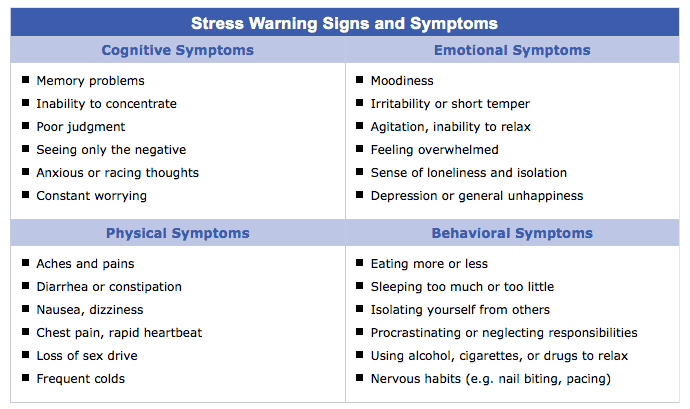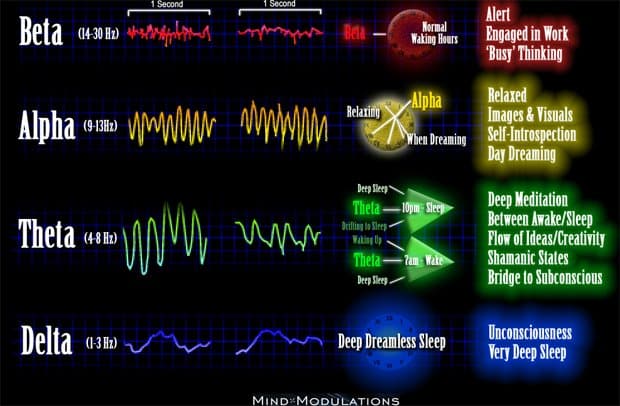How You Can Control Your Brainwave Frequencies, The Keys To Happiness
Is it possible that your brainwave frequencies are the key to a stress-free, happy life? Well, there’s no doubt about it. It’s measurable, and the truth is, get your brain to produce Alpha and Theta brainwaves and you’ll hold the keys to your happiness.
 THE ASSERTION that I’ve been a life-long dabbler in health matters is unsurprising to regular readers of this blog. What I haven’t written much about is my meditation experience, and how the meditation mindset could be useful to you.
THE ASSERTION that I’ve been a life-long dabbler in health matters is unsurprising to regular readers of this blog. What I haven’t written much about is my meditation experience, and how the meditation mindset could be useful to you.
For many years, I’ve delved deeply into matters of the mind, meditation being a facet. The opportunity for self awareness and self control that a meditation practice enables cannot be overerestimated, and this, dear reader, is the subject of today’s post, How You Can Control Your Brainwave Frequencies, The Keys To Your Happiness.
My meditation journey began with a week-long course taught by a psychiatrist to a small group of us gathering in room in San Francisco’s “Japan Town” in the early eighties.
The course taught what was then called “Silva Mind Control” (now, the Silva Method). We quickly learned to focus, an ability that permitted us to reach formerly unknowable parts of our minds, and retrieve information that would have been thought to be unattainable.
Suffice to say that I was hooked. I experienced a different level of consciousness, and I wanted more.
The Beauty Of Brainwave Frequencies
During the Silva Method course, I soon learned about the brainwaves of different frequencies that our brains produce, each enabling a different experience of one’s mind.
A frequency is the number of times a wave repeats itself within a second. Going from highest to lowest, these brain frequencies are called Gamma, Beta, Alpha, Theta and Delta.
Measured between 30 and 44 hertz, Gamma is the only frequency group found in every part of the brain, and is associated with attention and memory.
Beta can be segmented into three categories, low, mid and high, each with their own specific frequency, but overall, the beta range is between 12 and 18 hertz. Beta is the frequency most produced during our waking, thinking state. When in Beta, you’re alert, able to think clearly and are aware of your surroundings.
Alpha waves happen at between 8 and 12 hertz, and it’s here where meditation begins. The dominant state of mind in Alpha is relaxation and calm.
The next brainwave is Theta, between 4 and 8 hertz. The state of mind in Theta is dreamlike, fanciful, and intuitive. With practice, your meditation practice will enable you to move from Alpha to the deeper state of mind that Theta enables. EEG (electroencephalograph) measurements of monks’ brainwaves indicate that Theta is the dominant brainwave frequency attained during their meditation.
Finally, there’s Delta, the lowest brainwave frequency, which happens between 1 and 3.5 hertz. Delta typically happens in deep sleep, and is the unconscious mind. Very few have any conscious control or awareness when in Delta.
Developing the ability to produce Alpha and/or Theta brainwaves at your own volition is now extensively studied due to the clear benefits associated with these mind states.
For instance, it’s now clear that chronic stress keeps our cortisol levels high for sustained periods of time.
Cortisol is referred to as the “death hormone”, because it can impair the immune system and actually shorten your telomere’s, those chromosomal caps that indicate lifespan.
Cortisol has an important purpose – it prepares us for “flight or fight” when either of those two reactions to a threat is life preserving. But when neither fighting or running resolves the situation, such as when you’re sitting in traffic, then the cortisol that floods your body is not used up, but instead sticks around and does damage. (Read How Depression and Stress Make Us Age Faster.)
In this modern age where so many of us just sit, stress makes us ill. Learning how to deal with stress has consequently become an important focus of health research.
And it turns out that having control over your brainwave frequencies is the key to controlling stress, as well as simply being a happy camper.
So, let’s take a peak and stress and then dive into matters of the mind.
Are You Stressed?
Take a look at some common causes of stress, then some indicators that suggest that stress is in your life.
Common Causes of External Stress:
|
|
Common Causes of Internal Stress (self generated):
|
|
Are any of the above listed external and internal stress producing instigators happening in your life?
Well, if unsure, check to see if you’re experiencing any following warning signs and symptoms of stress?
 (Source)
(Source)
If you’re like most of us, your name is beside at least a couple of those “warning signs and symptoms” of stress above listed. After all, stress is such a prevalent by-product of modern life that we typically think that nothing can be done about it, and so we do nothing about it.
Truth is, though, that much can be done to deal with stress. Not eliminate it, because a certain amount is good. You want to feel uncomfortable when you encounter a Grizzly in the wilderness. But once that encounter is over — assuming your not — then those adrenals need to stop producing cortisol and you need to get back to tranquility.
There are practices that are designed to deal with stress, to make life much more enjoyable, and more in your control.
Mindfulness Based Stress Reduction
Consider a new study conducted by Brown University. These able researchers discovered that a form of mindfulness meditation that’s referred to as Mindfulness Based Stress Reduction (“MBSR”) might enable meditators to control their brainwaves to some extent.
And as you’ll soon discover, control of your brainwaves unlocks all sorts of hidden potentialities, including your dominion over stress.
The MBSR program follows some of the same principles of the Buddhist practice of focusing a “spotlight of attention” on different parts of their body, typically in a prescribed sequence, until the body and mind relax into a state that could be Alpha or Theta brainwave dominant, depending on the skill of the practitioner.
That we can gain control over the Beta, Alpha and Theta brainwave frequencies is now beyond dispute, given that a brain imaging technique known as magnetoencephalography (MEG) can measure them and their reaction to meditation techniques employed by the subjects being tested.
Brown University is studying MBSR and similar meditation methods because these practices have demonstrated an ability to reduce distress in individuals with chronic pain and decrease risk of relapses into depression, as well as what the researchers refer to as “attentional control”; meaning, the ability to control focus.
What Are Some Techniques To Practice Mindfulness?
The fine people of Brown University suggest the following ways, among many, to practice mindfulness:
- Walking: Be aware of the sensations of walking, like the quality of the pavement under your feet and how your body feels. Notice when your mind wanders and, without judgment, come back to awareness of walking.
- Taking a shower: Notice how the water feels on your body and the movements of your body as you shower. This can be a good time to focus on your breath as well.
- Brushing your teeth: Pay attention to all of the sensations, tastes and movements involved. Since we begin and end the day with this task, it can also be an opportunity to give yourself compassion or loving kindness
Once you become familiar with directing your attention to being present during fairly mundane experiences in your daily life, take it up a notch and settle in for some purposeful meditation.
Some Tips To Begin A Meditation Practice
Starting something new is hard to do. After all, we’re deeply held to the inertia of the various facets of life that make our life. For something new to happen, some room has to be made available for it (time, place) and some entrainment needs to be honed (effort, consistency).
So, I say, keep your beginning meditation practice simple and short. That way, you’re more likely to do it, and it will have the chance to pull you in deeper. Gradually, effortlessly, you’ll be spending more time in meditation – cranking out those Alpha and (with experience) Theta brainwaves – and making your life better.
Consider doing this meditation practice:
- Set a timer for five minutes. Now, you don’t have to struggle with how long you have to sit there meditating, for you’ll know that by design the session will be short and doable.
- Sit anyway that’s comfortable, as long as your spine, neck and head are upright and in alignment.
- Place your attention on your breath and gradually make the inhalations and exhalations longer. Do this through your nose. Pause after inhalation; slowly release. Pause after exhalation; slowly inhale.
- Once you have this relaxed, paced breathing on autopilot, bring your attention to wherever you have the most discomfort in your body. Visualize breathing your favorite color into that spot. When you can no longer do this without distraction, move to another part of your body.
- It’s inevitable that different thoughts will pop into your mind. This is natural and OK. Don’t try to force them out, but simply let them pass by your minds eye without attachment or emotion. If something (or someone) is clamoring for your attention within your mind, acknowledge it’s (their) presence, tell it (them) that you’ll address their issues soon, and then let them float away from your conscious attention.
Hopefully, when the timer rings you’ll feel a sense of regret that your time in meditation felt so good that you want to remain there and explore that state of mind longer.
But unless you’re big time into some “ah ha” moment of self-discovery, return to your normal state of mind. Let yourself hunger for the next time you’ve scheduled your meditation.
Only after these five minutes each day becomes habitual do I suggest that you extend the duration of your meditation practice. Try ten minutes, and go from there.
Lots of study was been done on acquiring new habits, and the bottom line for most of us is that change best happens in small bites. I’ve written two posts on this subject, so consider reading:
Why Your Goals Should Be Small
So, to put it all in a nutshell, just remember this:
1. Though stress and the vagaries of life may seem to control you, they need not, as there are techniques to put you in the driver’s seat on this trip through life, such as meditation.
2. Any new habit requires some cultivation, and the less you have to do to begin it (tiny steps), the greater is the chance that it will stick and even grow. So start small, and let it feed itself, till you’re a Theta-producing Monster!
If you have questions about meditation or would like to grace us with the telling of your own experiences, please scroll down to the Comments area and type away to your heart’s content.
Ciao for now.
Last Updated on July 7, 2023 by Joe Garma



